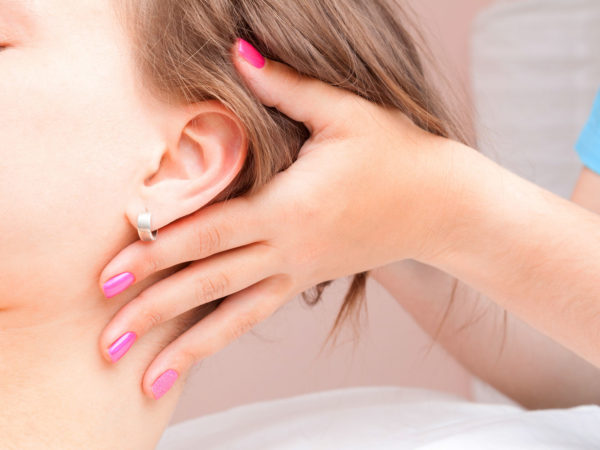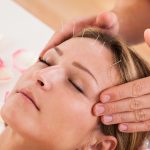Temporomandibular Joint (TMJ) Headaches

What Are Temporomandibular Joint Headaches?
These headaches stem from dysfunction of the temporomandibular joint (TMJ), the hinge joint that holds the jaw to the skull and enables us to open and close the mouth, chew and swallow. According to the TMJ Association Ltd., at any one time approximately 12 percent of the U.S. population or 35 million people are affected by TMJ disorders. Most of those who seek treatment are women in their childbearing years. It’s estimated that nine affected women for every one man have severe symptoms: major limitations in jaw movement and chronic pain. Fortunately, these problems tend to be self-limiting, although some can take as long as seven to 10 years to resolve.
What Are The Symptoms Of Temporomandibular Joint Headaches?
TMJ disorders can cause a wide range of symptoms. Headaches – including migraines – are among them, but few people affected with TMJ disorder have headache as the primary problem. Other symptoms include pain and tenderness when chewing, limited movement of the jaw, audible clicks or pops on opening the mouth, pain in the neck and shoulders, ear pain and ringing in the ears, dizziness and vision problems. In general, discomfort from TMJ disorder is occasional and temporary and resolves with little or no treatment.
The International Headache Society holds that headaches due to TMJ disorder typically resolve within three months and don’t recur following successful treatment.
What Are The Causes Of Temporomandibular Joint Headaches?
The causes of TMJ disorder may include muscle spasm and inflammation, rheumatoid and osteoarthritis, injury, stress, and teeth grinding, although often the disorder has no obvious cause. Certain habits, such as chewing gum or frequently resting a phone on one shoulder may contribute. And because TMJ disorder occurs more often in women than men, research is focusing on whether or not female hormones play a role.
What Is The Conventional Treatment?
Finding effective treatment for TMJ disorders may not be easy since there is no certified specialty for treating them in either dentistry or medicine. The National Institute of Dental and Craniofacial Research, a branch of the National Institutes of Health (NIH), recommends seeking a health care provider who understands disorders affecting muscle, bone and joints and is trained in treating pain. Hospital or university pain clinics may be able to direct you to a well-regarded provider.
Short-term use of prescription or over-the-counter anti-inflammatory drugs (such as ibuprofen) may be recommended to help ease the pain of headaches and other symptoms. Muscle relaxants as well as antidepressants and antiepileptic agents with analgesic properties may be prescribed. In addition, behavior modification, biofeedback, hypnosis, and physical therapy may be recommended to help reduce pain and restore normal jaw function. Physical therapy relies on heat and stretching to reduce joint inflammation, restore joint mobility, and eliminating muscle pain.
If you have TMJ disorder, you may be able to ease the pain by eating soft foods, using ice packs, and avoiding chewing gum as well as refraining from wide yawning and other actions placing stress on your jaw.
Be aware that surgical treatment for TMJ disorder is not recommended. There have been no long-term studies of its safety and efficacy. Similarly, studies of the effectiveness of appliances such as acrylic bite guards that fit over teeth have been inconclusive. Some can increase pain. (If so, stop using them.) Splints designed to reposition your lower jaw also should be avoided.
What Does Dr. Weil recommend For Temporomandibular Joint Headaches?
In addition to behavior modification, relaxation training, hypnosis and biofeedback mentioned above, Dr. Weil strongly recommends trying cranial osteopathy (also called cranial therapy), one modality of osteopathic manipulative therapies. (You can find a practitioner through the website of The Osteopathic Cranial Academy, http://www.cranialacademy.org.) He also recommends guided imagery therapy, acupuncture and taking 500 mg each of calcium and magnesium at bedtime and 12 hours later. Continue these supplements as long symptoms persist but decrease magnesium if you experience a laxative effect.
Source:
Steven B. Graff-Radford, “Temporomandibular Disorders and Headache,” American Migraine Foundation, americanmigrainefoundation.org/resource-library/temporomandibular-disorders-and-headache/














